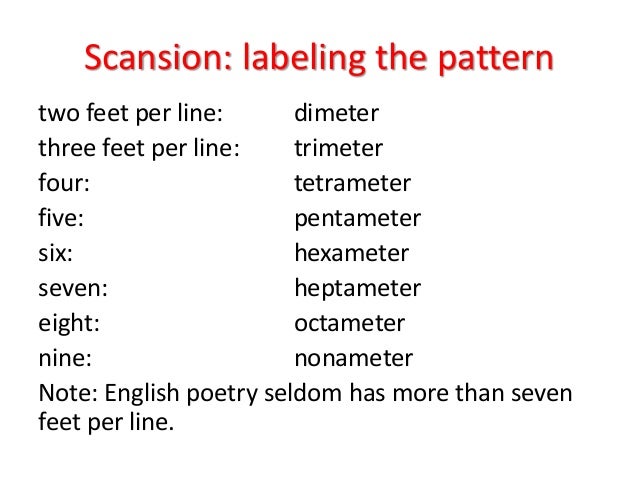

The results suggest that, although some features needed improvements, the users liked the application and expressed their interest in using it for practice. We undertook an evaluation of the application to learn whether the system supports the scansion practice task in the way it is supposed to, if the additional features are beneficial in the learning process and which features needed improvement, along with an evaluation of the overall project. Based on these requirements, we implemented an online scansion tool. We conducted semi-structured interviews with the stakeholders of the project to gather the functional and design requirements for the system under consideration. Through this thesis we tried to provide a computer-based solution where users could practice scansion, with the added benefits of a digital medium. In order to continue enjoying our site, we ask that you confirm your identity as a human. In a time when digital media is assisting students through interactive learning in many fields, scansion is not much benefitted from it. Most poems will not be completely regular. All four lines have three distinct stresses, so we must be in trimeter, albeit trimeter that’s differently realized in each line’s pattern of feet. Determine what dominant rhythmic pattern is used iambic ( de DUMM), trochaic (DUMM de), anapestic (de de DUMM), dactylic (DUMM de de), spondaic (DUMM DUMM). Note on line 1: The scansion of this line, the hardest in the poem, makes sense after you have worked on the lines that follow. Usually, poetry students are taught to practice scansion on paper. First scan the line marking all stressed syllables. The history to be valued in such cases is not a ground or world beyond the poem, but the event of the poem itself.Scansion is the process of identifying the rhythm of a poem, which plays an important part in the process of analysing a poem by assisting readers in understanding its textual and contextual meaning. To learn more about scansion, review the accompanying lesson, Scansion in Poetry: Definition & Examples. In both cases, the meter often has a regular foot. In classical poetry, these patterns are based on the different lengths of each vowel sound, and in English poetry, they are based on the different stresses placed on each syllable. In this mode, historical poetics aims both to restore poems to their proper historical moment and to show how poems work across history. A system of scansion is a way to mark the metrical patterns of a line of poetry.


This is to emphasize the singular over the common and repeated. monometer (pronounced 'mo-NAW-muh-ter') Two.
#Poem scansion practice how to
For English prosody, a good rule of thumb is to count the number of beats (stresses) per line. How to Scan a Poem Excerpted and adapted from A Poet's Craft: A Comprehensive Guide to Making and Sharing Your Poetry by Annie Finch (University of Michigan Press, 2012). For other critics, however, the historical significance of a poem lies instead in the way it challenges the poetics of its time. Note: while most meters are composed in just one kind of foot per line, poets frequently vary the prescribed rhythm. The cultural history of poetic forms thus becomes a history of social thought and practice conducted through poetry. Scansion, for generations of American students, has been the dominant method of studying prosody in poetry. These methods allow critics to tell histories of poetry and to reveal a history in poetry. In classical poetry, these patterns are based on the different lengths of each vowel sound, and in English poetry, they are based on the different stresses placed on each syllable. The first rule of scansion: If you think you hear a meter in a poem, it is probably an iambic meter the first thing to do is to. Sometimes this work has involved extensive archival research, examining memoirs, grammar books, philological tracts, and other materials in order to discover how poetry was conceived and interpreted at a particular time. A system of scansion is a way to mark the metrical patterns of a line of poetry. Much work in historical poetics has focused instead on problems of genre and reception, seeking the historical significance of poetry in what is common and repeated. Both approaches tend to reject received notions of the aesthetic or literary, with their emphasis on the individual poet and on the poem’s organic unity. Some critics have pursued an historical poetics by conducting quantitative studies of changes in metrical form, while others have investigated the social uses to which poetry was put in the cultures of the past. In the 21st century, various literary critics have sought to manage these competing imperatives by developing an “historical poetics.” These critics pursue sometimes very different projects, working with diverse methodologies and theoretical frameworks, but they share a desire to think again about the relation between poetics and history. If poetics customarily deals with generalities, history seems to insist on particulars.


 0 kommentar(er)
0 kommentar(er)
